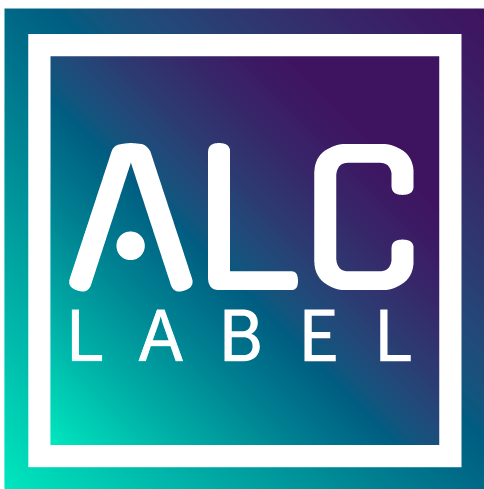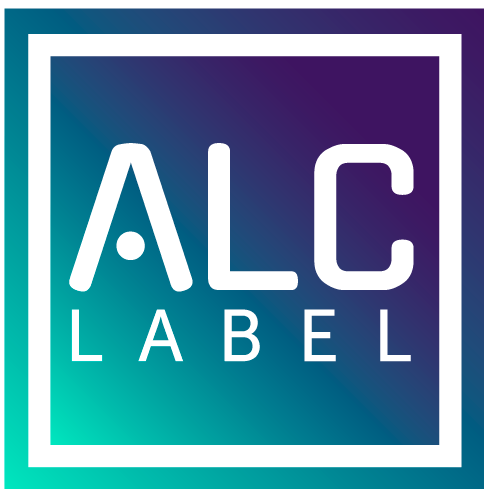New EU Ingredients & Nutritional Value Labelling Legislation for Wine: Q&As and Updates
From 8th December 2023, any wine produced or sold in the EU must declare ingredients and nutritional values [see the legislation here].
The EU recently published Q&As as discussed with experts from Member States [see full document here], which we have summarised below.
Please note that this is our best interpretation of the upcoming laws as published by the EU. Additional reviews and future changes may still occur, and we will continue to publish updates. Please consult legal advice from a professional if in doubt.
Timeline
Which wines does the new legislation affect?
‘Any wine produced or sold in the EU’ refers to all domestic or imported wines placed on the EU market. As such, this affects all wines produced in the EU, as well as wines that are imported from outside of the EU and sold in EU countries.
The legislation says ‘any wine produced from 8th December 2023’ – what does ‘produced’ mean?
When referring to a still wine, for a wine to be considered ‘produced,’ it must have achieved the required alcoholic strength and acidity content. If you have barrels/tanks of wine that have reached the required alcoholic strength and acidity content before 8th December 2023, but still need to be blended, they still count as already having been produced (thus they are exempt from the new regulations).
When referring to sparkling wine where secondary fermentation occurs, it states, ‘after the second fermentation has taken place, and the product has achieved its alcoholic strength and excess pressure conditions.’ So, the wine is considered ‘produced’ when the second fermentation is complete.
If in doubt, you can check the categorisation surrounding the term ‘produced’ in Annex VII Part II of this document.
Which wines will be the first to be affected/when do producers need to follow the new labelling laws?
Due to the above definitions of ‘produced’, the first wines that will be affected will be icewine/Eiswein (if produced), as well as sparkling wines that complete secondary fermentation after 8th December.
As a whole, the legislation will first affect the 2024 vintage of the southern hemisphere, then wines produced in the 2024 vintage of the northern hemisphere.
Ingredients & Nutritional Information
How should the ingredients and nutritional information be presented?
The energy value (kJ/kcal) must be printed on the label itself, as must allergens (i.e. sulfites, egg and milk). The rest of the nutritional table and the ingredients can also either be printed on the label itself or be made accessible by electronic means (such as a QR code). It must be in the same field of vision as other compulsory information, and it must be legible without having to turn the bottle. It must be clearly distinguishable from surrounding text or graphics. If printed, the ‘x-height’ (see below) of the font size must be equal to or greater than 1.2 mm.
How should the ingredients be named and structured?
The main ingredient for wine can be listed simply as ‘grapes.’
Other ingredients must be listed in functional categories (e.g. acidity regulators, preservatives/antioxidants, stabilizing agents, etc).
The list must display the ingredients in descending order of weight, as recorded at the time of their use in the winemaking process. As such, grapes should always be listed first. Ingredients constituting less than 2% of the finished product may be listed in any order after the other ingredients.
Any ingredients that can cause allergies or intolerances must be listed on the label itself. In the full list, they must also be indicated by a typeset that distinguishes them (e.g. bold, a different font or background colour).
With regards to enrichment, ‘rectified concentrated grape must’ must be replaced by ‘concentrated grape must.’ Sucrose must be listed separately and can be designated by the name ‘sugar’ instead.
Yeasts used for wine production do not have to be listed as ingredients. They are listed as ‘processing aids,’ and additives used as processing aids are not required to be included in the list of ingredients. Other components or parts of the yeasts used with distinct functions in wine production are also considered processing aids and so are also exempt. The only yeast compound that must be mentioned in the list of ingredients is yeast mannoprotein since this is categorised as a ‘stabilising agent.’ The list determining which ingredients are considered ‘processing aids’ can be found in Annex I Table II here.
How should bottling gases be designated?
In the case of using gas during bottling, the specific gas does not have to be listed. This can be replaced by the phrase ‘Bottled in a protective atmosphere’ or ‘Bottling may happen in a protective atmosphere.’
The regulation also requires declaration regarding the amounts of fat, saturates, carbohydrate, sugars, protein, and salt. If there is negligent content in wine (e.g. fat, saturated fat, protein and salt), do you still need to show it, and if so, how?
It still needs to be shown, either as e.g. 0, or it may be replaced by a statement such as ‘Contains negligible amounts of …’ indicated in close proximity to the nutrition declaration.
In order to be categorised as negligible, the fat/saturates/carbohydrate/sugars/protein must be <0.5g, and the salt must be <0.01g. As such, carbohydrate and sugar levels will always need to be declared, and salt may sometimes need to be declared.
How are the values of the different nutrition elements fixed? Is an analysis for every wine and every harvest necessary or can values also be calculated (e.g. for calories via the alcohol content and the residual sugar)?
The values in the nutrition declaration are average values, based on:
a) the manufacturer’s analysis of the food
b) the known or actual average values of the ingredients used
or
c) generally established and accepted data
It states that, ‘the energy value must be calculated using the conversion factors provided for in Annex XIV of the FIC Regulation and indicated in kilojoules (kJ) and kilocalories (kcal), indicating the kilojoules in the first place and kilocalories in the second place, as provided for in Annex XV of that Regulation [see below]. Energy values and nutrition values must be indicated per 100 g or per 100 ml.
If several batches of the same wine are produced, what is the tolerance for the difference between the information on the label and the actual energy and nutrient content of the wine?
If there are multiple batches of wine, then the energy value and the amount of nutrients should be labelled as the ‘average value.’
Presentation, E-Labels & Marketing
Is there a specific system or software that you must use for providing the information via electronic means?
The regulation does not specify which electronic means should be used, nor any specific electronic types of access. The only condition concerning the functioning of the electronic means is that the system must not collect or track user data.
The provision of information can in principle be made by any electronic means, electronic labelling or e-labelling means accessible by the public through a barcode of any kind (e.g. QR code) that provides a link to online information, which can be retrieved by using universal access tools (i.e., a smartphone).
It must be easily visible and clearly legible (it cannot in any way be hidden, obscured, detracted from or interrupted by words or imagery).
Is it possible to link, via a QR Code or similar, the ‘electronic label’ presenting the full nutrition declaration and list of ingredients on the producer’s website?
No. The regulation states that the information on the full nutritional declaration and list of ingredients shall not be displayed with other information intended for sales or marketing purposes, and that no user data shall be collected or tracked (there is no exception to this rule, and hence it doesn’t allow to request the consent of the user on whether their data can be tracked or not). Considering this, the presentation of this compulsory information as part of the producer’s website does not seem to comply, as the website of a wine producer contains commercial information relevant for marketing and/or sales. In addition, producer websites normally track information on the users, and the platform should provide the same guarantees as the ones in place when the information is displayed on the label in terms of readability, stability, reliability, durability, and accuracy of the information during the whole life of the product. Guaranteeing these features via a producer website would be unlikely.
Additionally, access to compulsory information by consumers/users should be direct and without any intermediate steps, such as filling any forms or queries, or passing through intermediate sites. The Commission services expect that the code, once read/scanned, takes the user immediately and directly to the compulsory labelling information.
What is the interpretation of the European Commission about the concept of ‘for marketing purposes’? To what extent can the inclusion of a claim in the electronic label (e.g. about sustainability, the origin of the product, or certification, etc.) be considered optional information to be legitimately included in the label? And when can this claim be considered ‘marketing’ instead?
Firstly, the compulsory information must be shown in a neutral environment which ensures that the attention of the reader is not engaged towards fostering the purchase of the product, either directly (e.g. through website links, promotion, indication of sales points, etc.) or indirectly (e.g. through appealing design), phrases or statements that may appeal the consumer, commercial language or other commercial strategies that aim at influencing the purchasing behaviour and decision of consumers.
Secondly, any information provided on a voluntary basis must not mislead the consumer, must not be ambiguous or confusing for the consumer, and shall, where appropriate, be based on the relevant scientific data. Such information shall not be displayed to the detriment of the space available for mandatory information.
Can I have more than one QR code on the label, for example another one which leads to marketing material?
This does not seem likely. They state that any use of additional QR codes (e.g. a separate one for marketing info) should not mislead or create confusion to consumers and should not detract any space from the one available for compulsory particulars, which would include the codes providing access to compulsory information by electronic means.
Would the inclusion on the label of a link to a winery’s e-commerce website be considered a marketing purpose?
The inclusion of an e-commerce website or a winery website is undoubtedly considered as ‘marketing purpose’ (so is not allowed).
How should the information provided by electronic means be identified on the label to inform about the content of the electronic means? Can the QR code be identified with a symbol (e.g. the letter ‘i’ intended for ‘information for consumers’) or should it explicitly refer with wording to the mandatory information the QR code leads to?
The QR code should be supplemented by a title such as ‘Nutrition/Ingredients.’ A simple ‘i’ is not deemed sufficient.
What language should the compulsory/optional information be shown in?
The information should appear in one or more official languages of the EU.
Any questions? Please feel free to reach out to us here.

